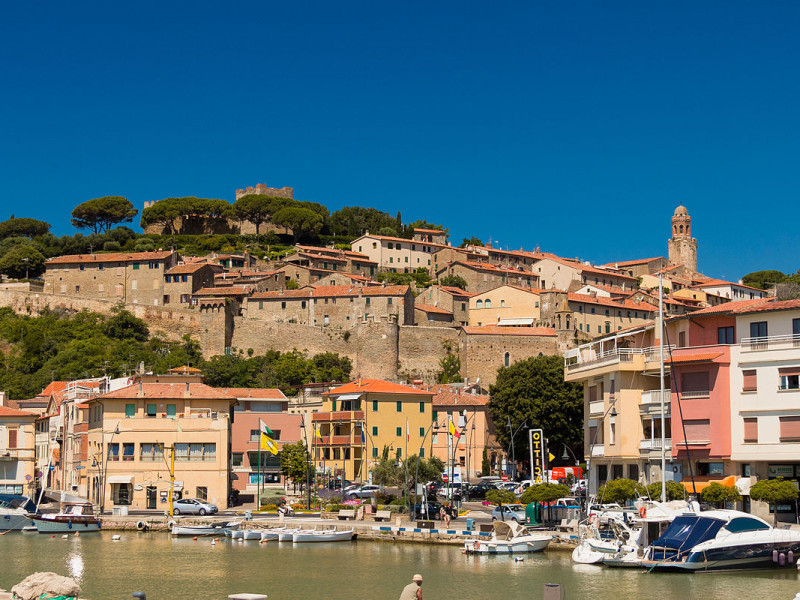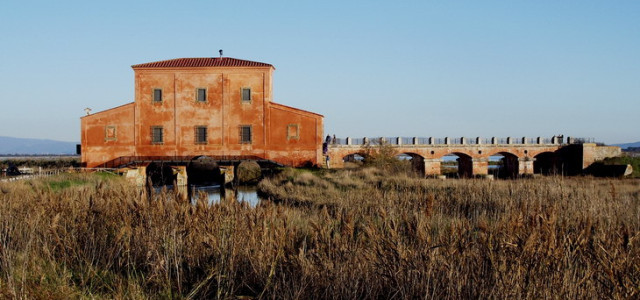Castiglione della Pescaia
Castiglione della Pescaia [kastiʎˈʎone della pesˈkaja] is an ancient seaside town in the province of Grosseto (Tuscany), Italy. The modern city grew around a medieval fortress (Italian: castello) and a large fishery, from which it got its designation. Today Castiglione della Pescaia is known for its beaches and has become a center of international (mostly European) tourism. Geography Castiglione della Pescaia consists of a High City built on the hill that ends a chain of hills towards the sea, and of a Low City at the foot of the High City, straddling the drainage canal and marina that form the central part of town. Castiglione is located in the South-Western portion of Tuscany, with a gorgeous view of the islands of Elba and Giglio, and of the promontory of Argentario. The hills that back the city slope into beautiful beaches that front the town in its entirety. To the East of Castiglione is the rich floodplain of the Ombrone. Nothing much remains of the ancient lake Prile that used to be Castiglione's lifeblood. History While Umbrians and Etruscans were most likely the first inhabitants of its location, Castiglione della Pescaia was first recorded under the name Salebrone in Roman times. The hill close to the coast proved to be an excellent location, as it dominated the sizable inland Prelius Lake, while the lake itself provided food (fish) and trading goods (salt). In Medieval times, the city suffered from repeated pirate attacks and almost disappeared. It resurfaced in the 9th century AD under its current name, under joint protection of the Papacy and the Republic of Pisa. The Pisans used Castiglione as a key element in their system of defence along the Tyrrhenian coast. They built first a single tower on top of the hill, later expanded that to three towers joined by a wall that became the nucleus of the citadel. The three towers of Castiglione dominate the city seal to this day. In the 13th century, Castiglione became an independent comune. Meanwhile, the river Ombrone had started silting up Lake Prile, which soon became a lagoon. In this newformed lagoon, malaria mosquitoes took hold, weakening the population of Castiglione. The city requested protection from various powers (Siena, the Medici, Aragon) and finally became part of the Grand Dukedom of Tuscany under the dynasty of Lorraine. The house of Lorraine started a series of projects that greatly enhanced the lives of Castiglionesi. The swamps were drained over decades, increasing the amount of arable land, as well as killing off the malaria carrying mosquitoes. After Tuscany became part of Italy in 1859, Castiglione became a comune in the province of Grosseto. Main sights The most notable attraction are the ancient remains in Vetulonia, one of the leading Etruscan cities. The frazioni of Punta Ala and Riva del Sole are beach resorts catering mostly to tourists from Central and Northern Europe. In the territory of Castiglione della Pescaia, the 1,000-hectare (2,500-acre) Natural Reserve of Diaccia Botrona (with 18th-century Casa Rossa Ximenes) is a designated wetland area of international interest, according to the Ramsar Convention. External links Travel guide Brief History and pictures Tourism in Castiglione della Pescaia



